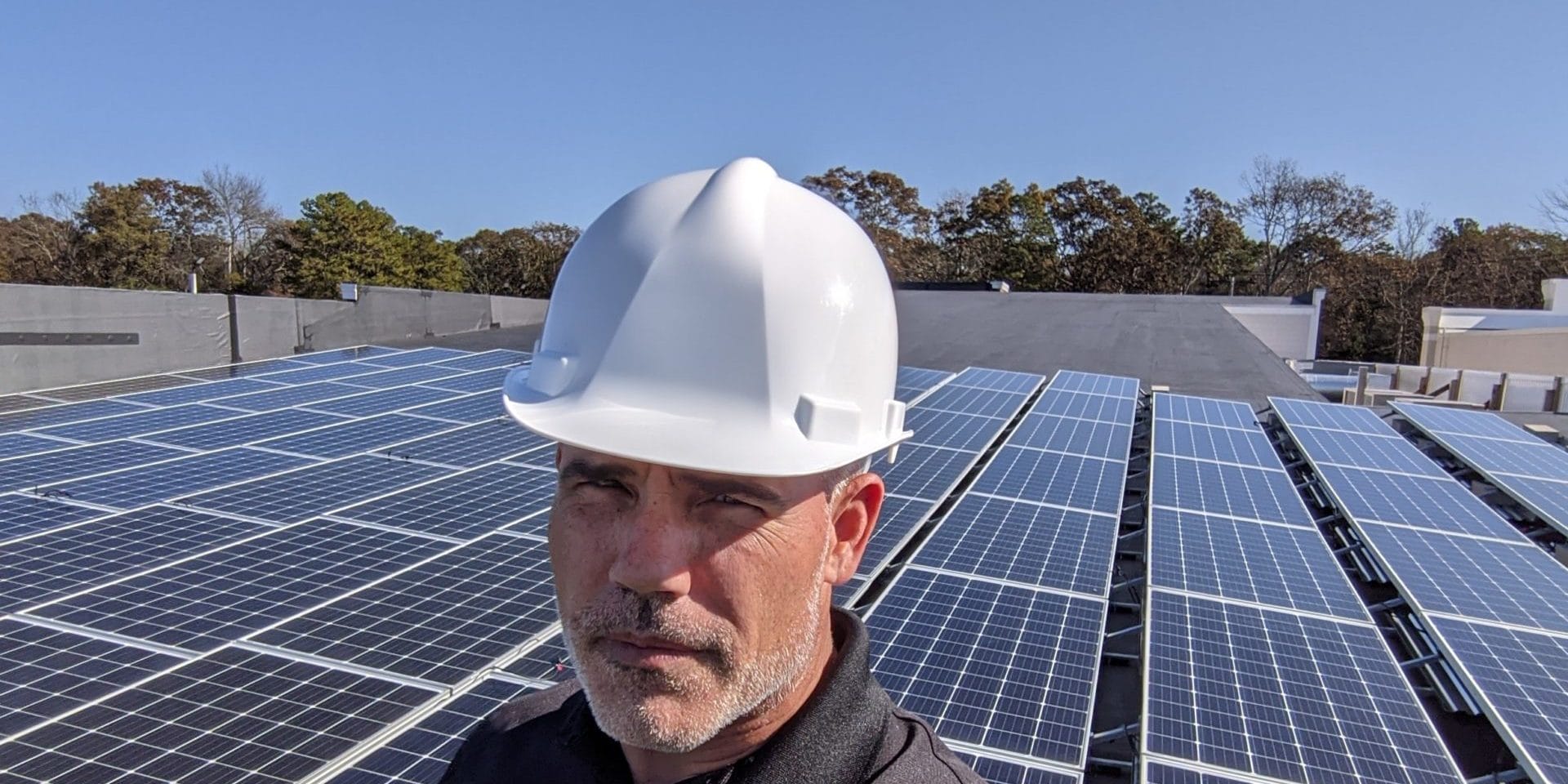The Clean Power Hour – a weekly clean energy headline review and commentary podcast run by Tim Montague, and yours truly – the CommercialSolarGuy – John Fitzgerald Weaver.
First of course, here’s the podcast – Episode 17.
Now, to the news!
Last week, CommercialSolarGuy visited a ‘pollinator friendly’ site. This means putting down the proper seeds, and managing appropriately, to support plants and flowers that bees, butterflies, birds, etc like. No bare clay, no bare rock, a decent amount of local grasses – and a lot of local everything that the animals like. If you’d like information on how to make your own pollinator friendly site – check out this article I wrote way back in the day – or reach out to Lindsey at Ernst Pollinator Services. As an aside, it was Lindsey who educated us on the new term, ‘solar meadows’ as a describer of solar+pollinator friendly facilities.
Meadville Land Services provided the pollinator friendly, plus other needed site work.
Leather a lot on an hour of talking – there's a science within everything pic.twitter.com/w1Z7A7I8BW
— Commercial Solar Guy (@SolarInMASS) October 27, 2020
Leading Edge Equipment Technologies secures more funding for solar silicon wafer manufacturing process
Leading Edge Equipment Technologies announced today the closing of $7.6 million in Series A financing; ‘manufacturing technology reduces wafer costs by 50%, increases commercial solar panel power by up to 7%, and reduces manufacturing emissions by over 50%’; ‘single-crystal growth at hyper-fast rates surpassing 250 mm/minute or 16 million atomic layers of perfect single crystal every second’; – Source website, and Source press release
Solar decommissioning specialist opining on how to better create value from used, but still very productive, solar power gear:
‘We continue to learn and open new markets in pursuit of repurposing as much of a solar decommissioned system as possible. We all are aware of the serious predicament we face as a solar industry for aging solar pv systems. Our solution; responsible repurposing of those assets to a second hand world market.’ – Source
We talked about the carbon emissions of an electric car when you account for the varying electricity sources by region. Specifically noted was the New England ISO, New York ISO areas noted in the article noted here, and PJM territory where Tim lives with his Model Y. You might notice Tim’s face get a bit more motivated when he realizes the effective carbon mileage of his Model Y with the dirtier local power grid in PJM area.
On the right, is the same information but for the ‘most efficient’ EV – which at the time of publication, was the 132 mpg Tesla Model 3. With a little algebra, we then see that the 112 mpg Model Y, gets about 272 mpg(e) in upstate New York. This value is 1/10th what a standard gas burning car outputs. – Source
Tesla battery researcher shows new test results pointing to batteries lasting over 2 million miles
“medium-range electric car would be able to last over 3.5 million km or over 2 million miles“; “batteries show very little to no capacity degradation when they are discharged between 25% to 50% of their capacity” For example, with this battery in a Tesla vehicle with over 300 miles of range, you could use it to commute 30 miles a day and by charging, on average, from 70 to 80% every day, it would result in very little to no battery degradation(!) – Source
We touched on a few of CommercialSolarGuy‘s site visits just to show cool pictures.
Final electrical work on 1005 Main Street – https://twitter.com/SolarInMASS/status/1318982259073048586
Starting roof attachment process at 17 Peckham – https://twitter.com/SolarInMASS/status/1320821215221714953
Roof inspection at 737 Main Street – https://twitter.com/SolarInMASS/status/1319691911616221185
And last, but not least, we talked a bit about Tesla energy storage – including a cool drone fly by of the Moss Landing project under construction, and that cool machine in the tweet below that is used to move Megapacks around the site.
‘Overall, Tesla’s stationary storage output is roughly doubling this year and doubling again next year, Musk said’ and More utility scale Megapack demand than supply, sold out through 2021 – ramping production through 2023, rapidly filling up all capacity through 2023 – multiple gigawatt scale.”
The first @Tesla Megapacks installed at PG&E’s Moss Landing substation. Once operational (targeting 2Q 2021) this 182.5MW battery #energystorage system will be one of the largest utility-owned, lithium-ion battery energy storage systems in the world. 🔋 pic.twitter.com/EW2MEm5Iz8
— Pacific Gas & Electric (@PGE4Me) October 6, 2020
And last, but definitely not least – here’s a BIGGER link to the podcast!

